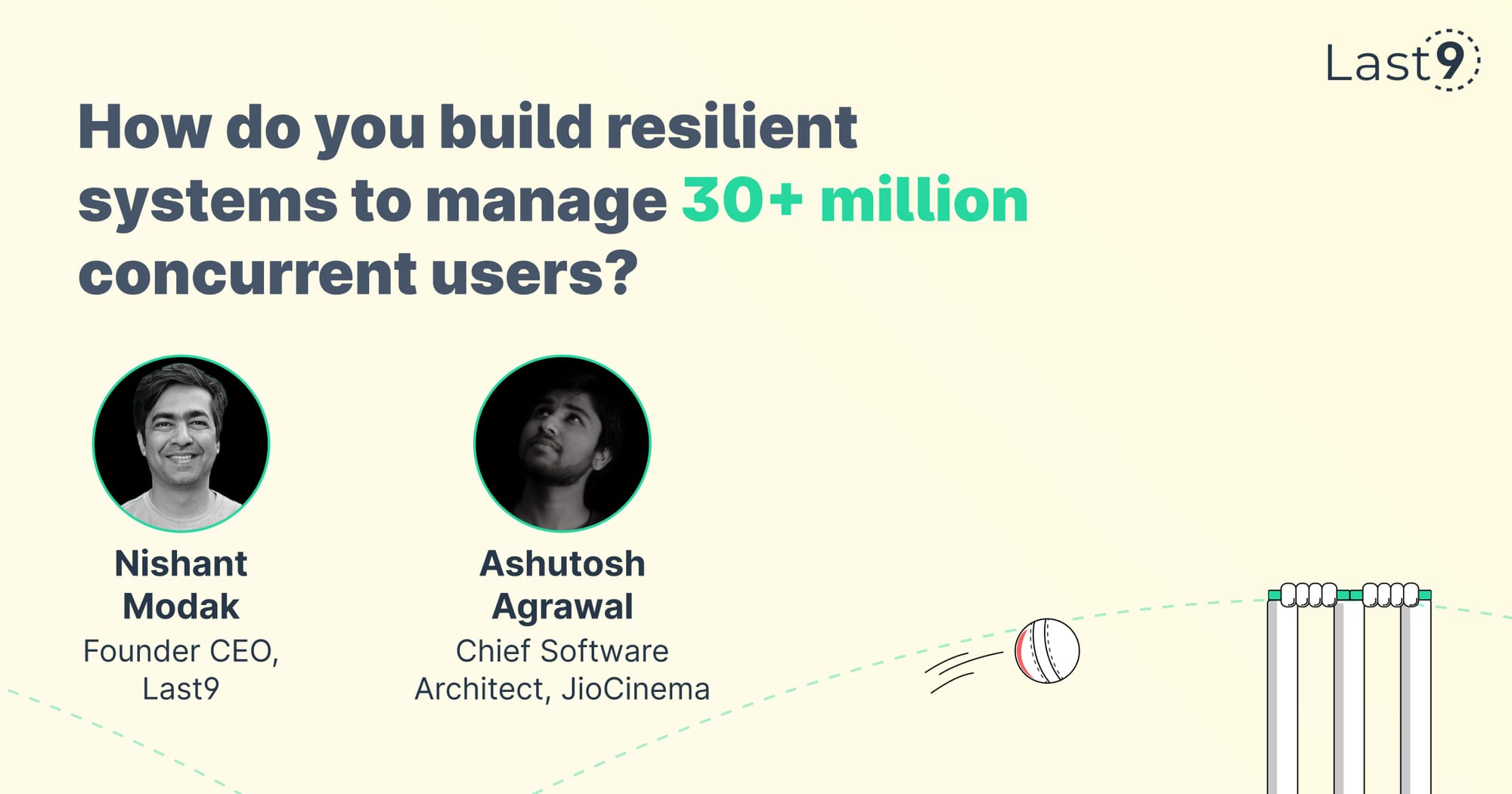So, you've jumped into DevOps and keep hearing about "reliability" and "availability" tossed around in meetings. Everyone nods like they know exactly what’s meant, but what’s the actual difference between these two concepts?
Let’s break it down simply—no jargon, just the essentials.
The Core Difference Between Reliability and Availability in Systems
Right off the bat: reliability is about how long your system works without failing, while availability focuses on how often your system is ready for action when users need it.
Think of it this way:
- Availability is like your friend who always answers your texts, even if sometimes the answers aren't helpful
- Reliability is like your friend who might take longer to respond but always gives solid advice
Availability Metrics: Measuring How Often Your System Is Accessible
Availability is measured as a percentage of uptime. Those famous "five nines" (99.999%) you've heard about? That's availability talk – it means your service is up and running 99.999% of the time.
In real minutes, that's:
- 99% = 3.65 days of downtime per year
- 99.9% = 8.76 hours of downtime per year
- 99.99% = 52.56 minutes of downtime per year
- 99.999% = 5.26 minutes of downtime per year
But here's the catch – a system can be available and still not working correctly. Your website might load, but if the checkout button doesn't work, that's an availability win but a reliability fail.
The traditional calculation for availability looks like this:
Availability = Uptime / (Uptime + Downtime)Where uptime and downtime are measured in units of time (usually minutes or hours).
Reliability Characteristics: Ensuring Consistent Performance and Accuracy
Reliability asks: "Does the system work correctly when it's available?" It's about consistency and predictability.
A reliable system:
- Returns correct results every time
- Handles expected load without degradation
- Processes transactions completely without corruption
- Maintains data integrity across operations
- Recovers gracefully from failures without data loss
You measure reliability with metrics like:
- Mean Time Between Failures (MTBF)
- Mean Time To Recovery (MTTR)
- Error rates per thousand or million operations
- Success rates of operations across system components
- Failure rates in production under various load conditions
Reliability is often calculated using:
Reliability = 1 - (Number of Failures / Number of Expected Operations)Or alternatively:
Reliability = e^(-failure rate × time)Where e is the mathematical constant approximately equal to 2.71828.
How Reliability and Availability Impact Your DevOps Strategy
As a new DevOps engineer, understanding this difference isn't just theoretical – it changes how you build, monitor, and fix systems daily.
Monitoring Strategy Differences for Reliability vs Availability
| Aspect | Availability Monitoring | Reliability Monitoring |
|---|---|---|
| Primary Focus | Is the system up and responsive? | Is the system working correctly? |
| Key Metrics | Uptime percentage, response time, ping success | Error rates, data correctness, transaction completion |
| Alert Triggers | Service down, timeouts, failed health checks | Increased error rates, data corruption, failed transactions |
| Common Tools | Ping checks, health endpoints, synthetic uptime monitors | Log analysis, synthetic transactions, business metric tracking |
| Recovery Action | Restart service, failover to backup | Fix data issues, roll back changes, address root causes |
System Architecture Decisions Based on Reliability and Availability Goals
How you balance reliability and availability affects your architecture choices at every level:
High Availability System Architecture Approach
- Multiple redundant systems with automatic failover
- Load balancers distributing traffic across multiple instances
- Auto-scaling groups that respond to demand changes
- Geographic distribution across multiple regions
- Fast failover mechanisms with minimal transition time
- Stateless design where possible to enable easy scaling
These architecture choices maximize uptime but may sometimes sacrifice consistency during failure scenarios.
High-Reliability System Architecture Approach
- Thorough testing regimes including integration and chaos testing
- Slower, more controlled deployments with staged rollouts
- Circuit breakers that prevent cascade failures
- Comprehensive monitoring of business outcomes, not just technical metrics
- Detailed logging of all state changes and transactions
- Strong data validation at all entry points
- Transactional integrity with proper ACID compliance where needed
These choices ensure correctness but may require occasional downtime for upgrades or recovery.
Examples That Illustrate Reliability vs Availability Tradeoffs
The E-Commerce Shopping Cart Experience
Imagine an e-commerce site with these two scenarios:
- High availability, lower reliability: The site is always up, but sometimes items vanish from carts, prices change unexpectedly, or orders fail silently. The company prioritized 100% uptime over transaction consistency.
- High reliability, somewhat lower availability: The site occasionally has 10-minute scheduled maintenance windows, but when it's running, every transaction works perfectly every time. Cart contents are never lost, prices never change unexpectedly, and orders never fail without clear error messages.
Which would you prefer as a customer? Most would choose #2 – because reliability often trumps availability for business-critical operations. A brief, planned outage is better than incorrect behavior.
The Database Technology Selection Process
When picking a database technology:
- If you choose a traditional SQL database with ACID properties (like PostgreSQL or MySQL), you're leaning toward reliability. These databases ensure transactions are Atomic, Consistent, Isolated, and Durable, even if it means occasionally rejecting operations during high load.
- If you choose a NoSQL solution with eventual consistency (like Cassandra or MongoDB), you're often favoring availability. These databases remain available for reads and writes even during network partitions, but may return slightly stale or inconsistent data in some scenarios.
This is a direct application of the CAP theorem, which states that distributed systems can only guarantee two of three properties: Consistency, Availability, and Partition tolerance.
Common DevOps Tradeoffs Between Reliability and Availability
Here's where it gets real. As a DevOps engineer, you'll often need to make these tradeoffs:
Deployment Frequency vs. System Reliability Considerations
- Faster, more frequent deployments might increase innovation but also increase risk
- More testing increases reliability but slows down the delivery pipeline
- Canary deployments help balance this by limiting the exposure of new code
Budget Constraints vs. Availability Requirements
- Higher availability = more redundant systems = higher infrastructure costs
- Is 99.99% worth 10x the cost of 99.9%? This requires business analysis
- For many non-critical systems, planned maintenance windows are more cost-effective than full redundancy
System Complexity vs. Reliability Engineering Challenges
- More complex systems have more potential failure points and interactions
- But simplicity might limit recovery options and scalability
- Finding the right balance requires experience and careful architecture reviews
Practical Techniques to Improve Both Reliability and Availability
Good news – you can boost both with these proven DevOps practices:
Techniques for Better System Availability:
- Implement comprehensive health checks and auto-healing mechanisms
- Use redundancy wisely across components, not just servers
- Design for graceful degradation where parts of functionality remain available during partial outages
- Create fast rollback capabilities for all deployments
- Implement proper caching strategies to reduce load on backend systems
- Use CDNs for static content delivery to improve regional availability
Methods for Enhancing System Reliability:
- Build observability into your services with detailed instrumentation
- Automate testing at the unit, integration, and system levels
- Practice chaos engineering (break things on purpose in controlled environments)
- Implement circuit breakers and rate limiters to prevent cascade failures
- Use feature flags to control the rollout of new functionality
- Maintain comprehensive runbooks for common failure scenarios
- Conduct regular post-mortem analyses that focus on systemic improvements
SLOs and SLAs: The Essential Metrics
As you grow in your DevOps role, you'll need to translate reliability and availability into concrete agreements:
SLO (Service Level Objective): Setting Internal Performance Targets
This is your internal target – what you aim to deliver. For example:
- "Our API will have 99.95% availability measured monthly"
- "99.99% of API calls will complete in under 300ms"
- "The error rate will remain below 0.1% for all critical transactions"
SLOs give your team clear, measurable goals and help prioritize work.
SLA (Service Level Agreement): Making Commitments to Users and Customers
This is what you promise customers, often with penalties if you miss:
- "The service will be available 99.9% of the time, measured quarterly"
- "We guarantee 99.5% of transactions will process correctly"
- "All support tickets will receive an initial response within 4 hours"
SLAs are typically more conservative than SLOs, giving you buffer room between your internal targets and external commitments.
Creating an Error Budget Framework
Many modern DevOps teams work with "error budgets" – a concept that gives teams the freedom to innovate as long as they stay within reliability targets.
For example, if your SLO is 99.9% availability (43.8 minutes of downtime per month), and you've only used 10 minutes this month, you have 33.8 minutes in your "error budget" that can be risked on new deployments or experiments.
How Last9 Helps Master Both Reliability and Availability
When it comes to improving reliability and availability, having the right tools can make all the difference. At Last9, we help DevOps teams:
- Monitor reliability and availability metrics in one dashboard
- Track SLOs and SLAs with real-time performance data
- Spot trends before they lead to customer-impacting issues
- Reduce alert fatigue with smarter anomaly detection
- Connect infrastructure metrics to business outcomes
- Visualize service dependencies to better understand risks
Wrapping Up
If you find this breakdown helpful or have questions about balancing reliability and availability in your environment, jump into our Discord Community where we talk about DevOps successes and failures.
FAQs
What matters more: reliability or availability?
It depends on your specific service. For most business-critical applications, reliability often matters more than availability – customers generally prefer brief, planned downtime over incorrect results or lost data. However, for infrastructure services like DNS or authentication, availability may take precedence since other systems depend on them.
Can a system be 100% reliable and available?
In theory, no. The complexity of modern systems makes perfect reliability and availability mathematically impossible. Even the most robust systems experience failures. This is why we work with "nines" (99.9%, 99.99%, etc.) rather than 100%. The goal is to be "reliable enough" and "available enough" for your specific use case.
How do you measure reliability in practice?
While availability is relatively straightforward to measure (system up or down), reliability measurement is more nuanced. Common approaches include:
- Tracking success rates of key business transactions
- Monitoring error rates across APIs and services
- Measuring data consistency through sampling or checksums
- Tracking Mean Time Between Failures (MTBF) for critical components
What's the relationship between reliability, availability, and scalability?
They're closely related but distinct. Scalability (the ability to handle growing load) can affect both reliability and availability. A system that can't scale might remain available but become unreliable under load, with increased error rates or timeout issues. Properly designed scalable systems improve both reliability and availability during demand spikes.
How do microservices affect reliability and availability?
Microservices present both opportunities and challenges. They can improve availability by allowing independent scaling and deployment of components. However, they can reduce reliability if service interactions aren't properly managed, as more network calls mean more potential failure points. Successful microservice architectures require strong observability, circuit breakers, and careful API design.
What's more expensive to achieve: high reliability or high availability?
High availability often requires redundant infrastructure, which has direct costs. High reliability frequently requires more engineering time for testing and quality assurance, which has indirect costs. In most cases, pushing availability beyond 99.99% becomes exponentially more expensive than improving reliability, as it requires multi-region, multi-cloud strategies with complex failover mechanisms.



